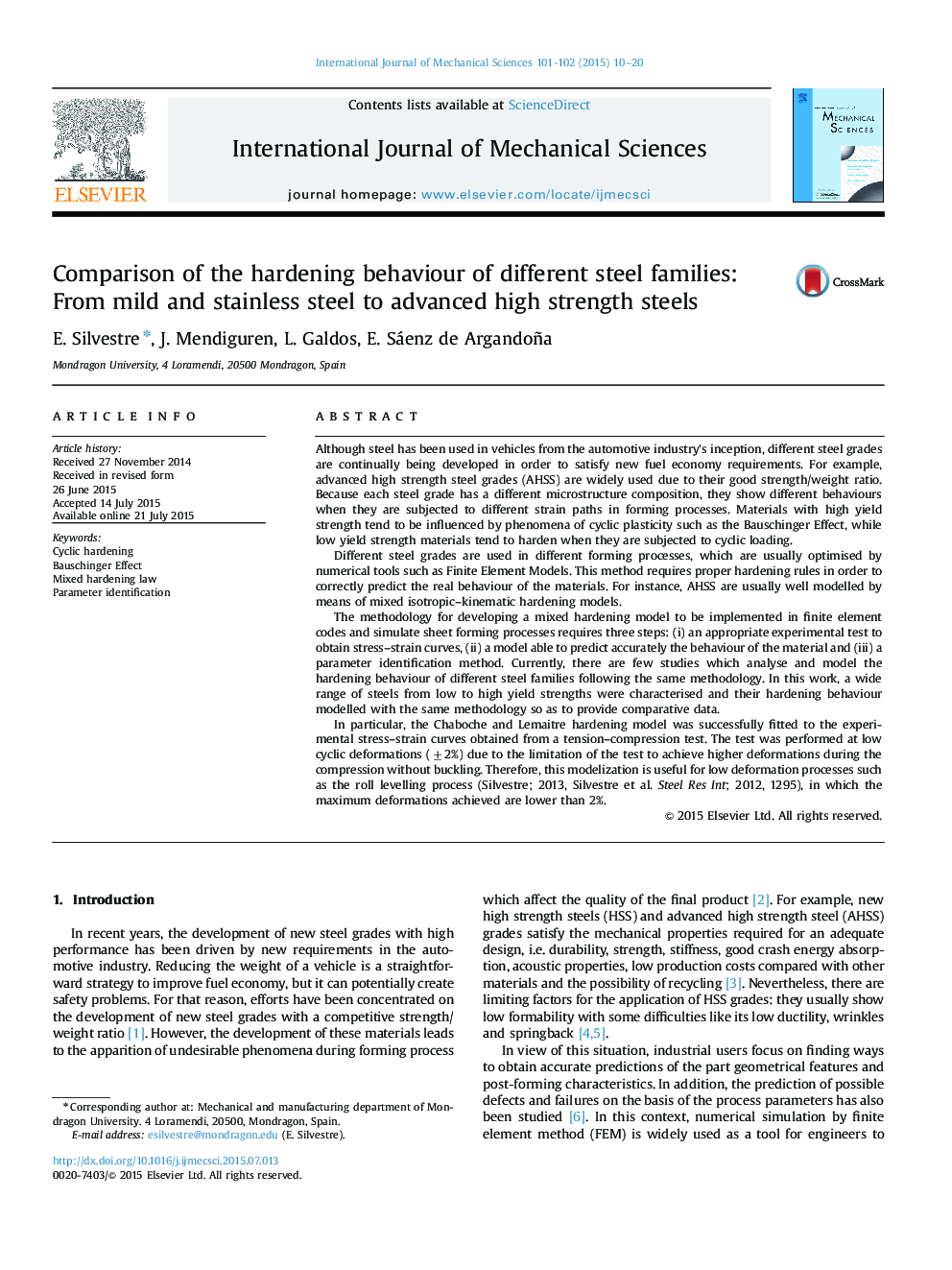| کد مقاله | کد نشریه | سال انتشار | مقاله انگلیسی | نسخه تمام متن |
|---|---|---|---|---|
| 783312 | 1464981 | 2015 | 11 صفحه PDF | دانلود رایگان |
• Hardening is influenced by microstructural composition of the materials.
• AHSS show a kinematic behaviour more pronounced than mild steels.
• Micro-strength differential in multiphase materials cause the Bauschinger Effect.
• Initial softening during the first cycle is observed in AHSS.
Although steel has been used in vehicles from the automotive industry׳s inception, different steel grades are continually being developed in order to satisfy new fuel economy requirements. For example, advanced high strength steel grades (AHSS) are widely used due to their good strength/weight ratio. Because each steel grade has a different microstructure composition, they show different behaviours when they are subjected to different strain paths in forming processes. Materials with high yield strength tend to be influenced by phenomena of cyclic plasticity such as the Bauschinger Effect, while low yield strength materials tend to harden when they are subjected to cyclic loading.Different steel grades are used in different forming processes, which are usually optimised by numerical tools such as Finite Element Models. This method requires proper hardening rules in order to correctly predict the real behaviour of the materials. For instance, AHSS are usually well modelled by means of mixed isotropic–kinematic hardening models.The methodology for developing a mixed hardening model to be implemented in finite element codes and simulate sheet forming processes requires three steps: (i) an appropriate experimental test to obtain stress–strain curves, (ii) a model able to predict accurately the behaviour of the material and (iii) a parameter identification method. Currently, there are few studies which analyse and model the hardening behaviour of different steel families following the same methodology. In this work, a wide range of steels from low to high yield strengths were characterised and their hardening behaviour modelled with the same methodology so as to provide comparative data.In particular, the Chaboche and Lemaitre hardening model was successfully fitted to the experimental stress–strain curves obtained from a tension–compression test. The test was performed at low cyclic deformations (±2%) due to the limitation of the test to achieve higher deformations during the compression without buckling. Therefore, this modelization is useful for low deformation processes such as the roll levelling process (Silvestre; 2013, Silvestre et al. Steel Res Int; 2012, 1295), in which the maximum deformations achieved are lower than 2%.
Journal: International Journal of Mechanical Sciences - Volumes 101–102, October 2015, Pages 10–20
